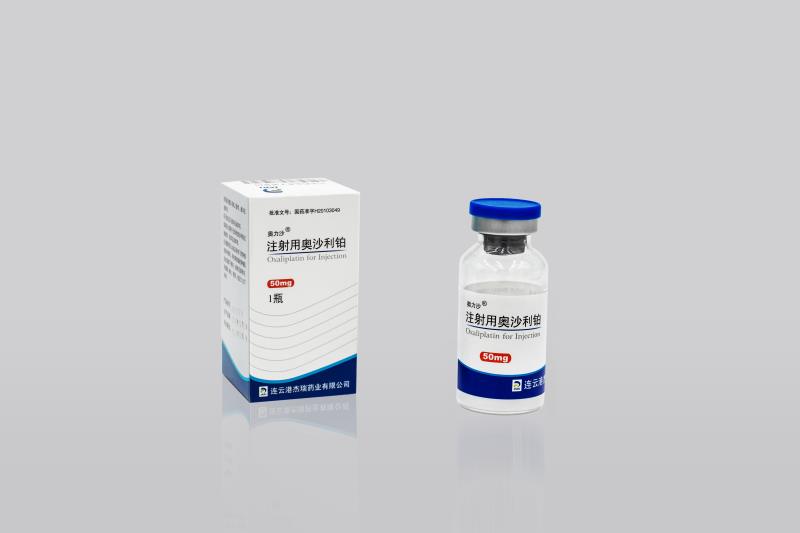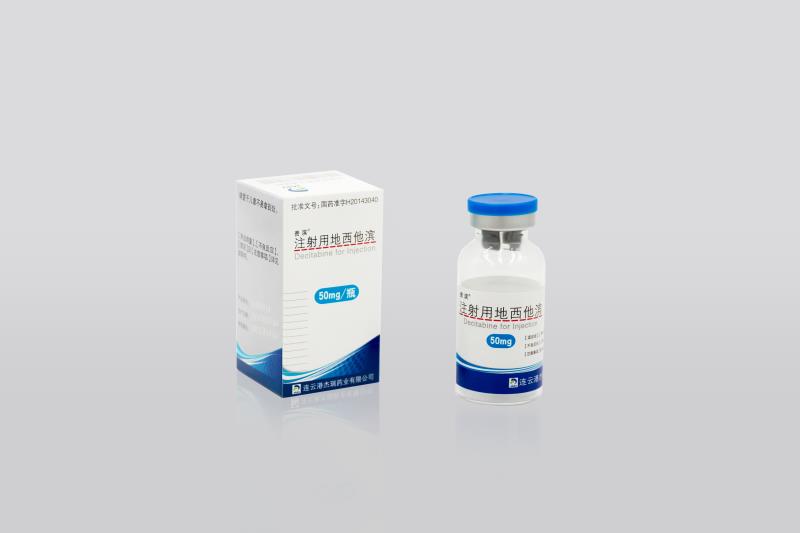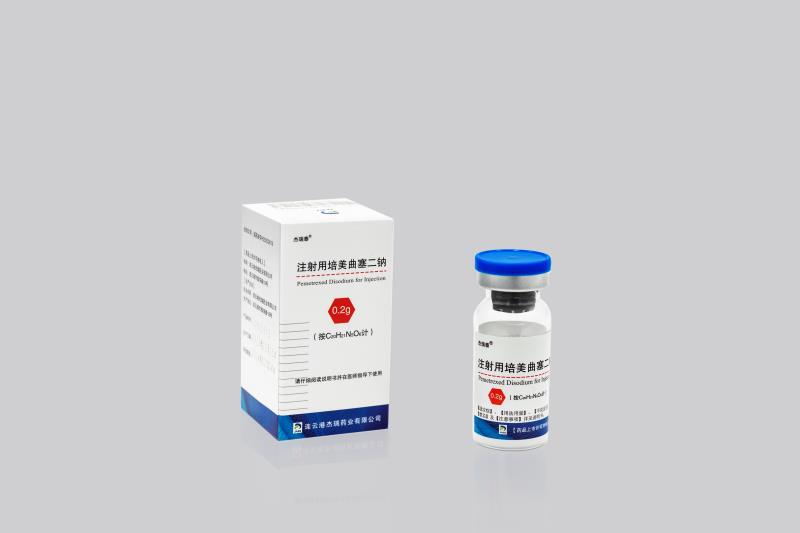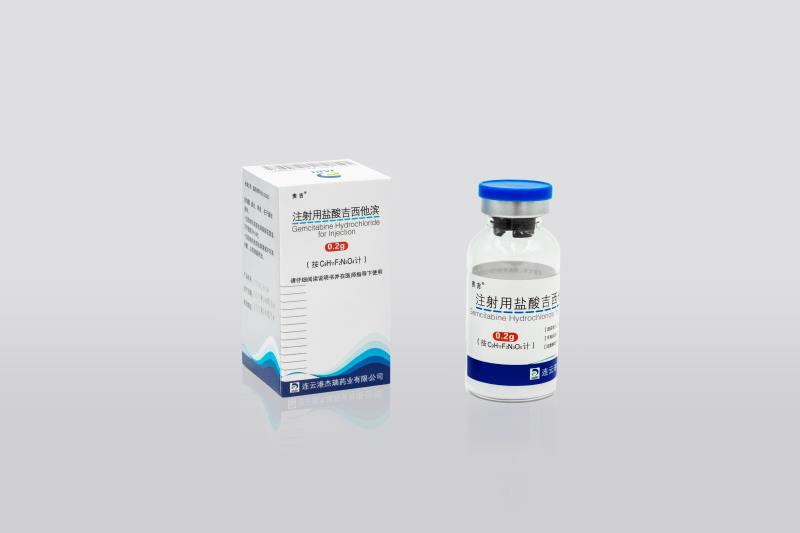Oxaliplatin For Injection

【Ingredient】
The main ingredient of this product is oxaliplatin
【Character】
This product is white or off-white loose lump or powder.
【Indications】
In combination with 5-fluorouracil and folinic acid (leucovorin):
——Treatment of metastatic colorectal cancer.
——Adjuvant treatment of Stage III colon cancer in patients who have undergone complete resection of the primary tumor.
——Treatment of locally advanced and metastatic hepatocellular carcinoma (HCC) not suitable for surgical resection or local therapy.
【Specification】:50 mg
【Dosage And Administration】
——Recommended Dosage:
Adult Use Only
Adjuvant therapy for colon cancer,the recommended dose of oxaliplatin is 85mg/m2 (intravenous infusion)repeat every 2 weeks for 12 cycles (6 months).
When treating metastatic colorectal cancer the recommended dosege of oxaliplatin is 85mg/m2 (intravenous infusion).Repeat every 2 weeks,or 130mg/m2 (intravenous infusion) repeated every 3 weeks,until disease progression or unacceptable toxicity, or as directed by a physician.
In the treatment of unresectable hepatocellular carcinoma, the recommended dosege of oxaliplatin is 85 mg/m2 (intravenous infusion) in the oxaliplatin plus 5-fluorouracil and leucovorin FOLFOX4 regimen repeated every 2 weeks until disease Progress or unacceptable toxicity.
Oxaliplatin is primarily used in combination regimens based on continuous infusion of 5-fluorouracil. 5-Fluorouracil is administered as a combination of bolus and continuous infusion in a biweekly repeat regimen.For information on fluorouracil and leucovorin, see the respective inserts.
The dose of oxaliplatin should be adjusted according to the patient's tolerance (see "Special Warnings and Special Precautions for Use" in [Precautions]).
Decitabine For Injection

【Ingredient】
The main ingredient of this product is Decitabine.
【Character】
This product is white powder or loose lump.
【Indications】
For treatment of adult patients with myelodysplastic syndromes (MDS) including previously treated and untreated, de novo and secondary MDS of all French-American-British subtypes (refractory anemia, refractory anemia with ringed sideroblasts, refractory anemia with excess blasts, refractory anemia with excess blasts in transformation, and chronic myelomonocytic leukemia) and intermediate-1, intermediate-2, and high-risk International Prognostic Scoring System groups.
【Specification】:50 mg
【Dosage And Administration】
Complete blood and platelet counts are required to monitor clinical response and toxicity during treatment with this product, and to ensure that at least the minimum is achieved before each dosing cycle. Liver biochemistry and serum creatinine should also be measured before starting treatment.
——Two dosing regimens are recommended
Dosing regimen one(Three Day Regimen)
Administer Dacogen at a dose of 15 mg/m2 by continuous intravenous infusion over 3 hours repeated every 8 hours for 3 days.Patients can be pre-medicated with conventional antiemetics.
Dosing cycle.
Repeat the cycle every 6 weeks. It is recommended to repeat at least 4 cycles.However, patients in complete or partial remission can be treated for more than 4 cycles.If the patient continues to benefit, the drug can be continued.
Dosing regimen two(Five Day Regimen)
Administer Dacogen at a dose of 20 mg/m2 by continuous intravenous infusion over 1 hour daily for 5 days.Repeat cycle every 4 weeks.Patients can be pre-medicated with conventional antiemetics.
If myelosuppression occurs, subsequent treatment cycles should be postponed until recovery of hematological parameters (ANC ≥ 1,000/μL, platelets ≥ 50,000/μL). If non-hematological toxicity occurs, it should also be handled according to protocol 1.
Based on foreign clinical research data, it is suggested that the 5-day dosing regimen has better tolerance than the 3-day dosing regimen. The program has already been approved abroad. The Chinese population has limited application experience. The attending physician should choose a reasonable dosing regimen according to the Chinese patient's own condition.
Pemetrexed Disodium For Injection

【Ingredient】
The main ingredient of this product is pemetrexed disodium.
【Character】
This product is a sterile white-to-light yellow or green-yellow lyophilized solids.
【Indications】
Non-Small Cell Lung Cancer
——In combination with cisplatin for the first-line treatment of patients with locally advanced or metastatic non-squamous non-small cell lung cancer.
——As a single agent for the maintenance treatment of patients with locally advanced or metastatic non-squamous non-small cell lung cancer whose disease has not progressed after four cycles of platinum-based first-line chemotherapy.
——As a single agent for the treatment of patients with locally advanced or metastatic non-squamous non-small cell lung cancer who have progressed after first-line chemotherapy.
——This product is not indicated for the treatment of patients with histologically predominant squamous cell carcinoma.
Malignant pleural mesothelioma
This product is indicated, in combination with cisplatin for the treatment of patients with malignant pleural mesothelioma whose disease is not candidates for curative surgery.
【Specification】
Calculated as amount of pemetrexed(C20H21N5O6),(1)0.1 g (2)0.2 g.
【Dosage And Administration】
This product must be used under the guidance of qualified physicians with experience in anti-tumor chemotherapy. This product is for intravenous infusion only.
The preparation of its solution must be carried out in accordance with the instructions for "Preparation of Solutions for Intravenous Infusion".
Administered with cisplatin:
Non-squamous non-small cell lung cancer and malignant pleural mesothelioma.
The recommended dose is 500 mg/m2 as an intravenous infusion over 10 minutes on Day1 of each 21-day cycle. The recommended dose of cisplatin is 75 mg/m2 BSA, administered intravenously over 2 hours, and should be administered approximately 30 minutes after the end of pemetrexed administration on day 1 of each 21-day cycle. Adequate antiemetic and appropriate hydration therapy must be administered before and/or after cisplatin therapy (see cisplatin instructions for specific dosing recommendations).
Monotherapy:
non-squamous non-small cell lung cancer
For patients with non-small cell lung cancer who have received chemotherapy in the past, the recommended dose of this product is 500 mg/m2 BSA, intravenous infusion over 10 minutes. Each 21-day cycle is administered on day 1 of each cycle.
Gemcitabine Hydrochloride for Injection

【Ingredient】
The main ingredient of this product is Gemcitabine Hydrochloride.
【Character】
This product is white loose lump or powder.
【Indications】
This product can be used to treat the following diseases:
——Locally advanced or metastatic non-small cell lung cancer;
——Locally advanced or metastatic pancreatic cancer;
——Gemcitabine in combination with paclitaxel is indicated for the treatment of unresectable, locally recurrent or metastatic breast cancer that has recurred after adjuvant/neoadjuvant chemotherapy. Anthracyclines should be used in prior chemotherapy unless clinically contraindicated.
【Specification】
0.2 g(calculated as amount of C9H11F2N3O4)
【Dosage And Administration】
This product should be used under the guidance of an experienced oncologist. It is recommended to refer to the existing clinical trial data to adjust the dosage according to individual clinical conditions.
Dosage
Aldult:
Non-small cell lung cancer
Monotherapy:
The recommended dose of gemcitabine is 1000 mg/m2 by intravenous infusion over 30 minutes. Administer once a week with a 1-week break after 3 weeks of treatment. Repeat the 4-week treatment cycle described above. Dose reductions may be considered per treatment cycle or within a treatment cycle based on patient tolerance to gemcitabine.
Combination therapy:
Combination therapy with gemcitabine and cisplatin is available in two treatment regimens: 3-week therapy and 4-week therapy.
3-week therapy: The recommended dose of gemcitabine is 1250 mg/m2 by intravenous infusion over 30 minutes. Dosed on Days 1 and 8 of every 21-day treatment cycle. Dose reductions may be considered per treatment cycle or within a treatment cycle based on patient tolerance to gemcitabine.
4-week therapy: The recommended dose of gemcitabine is 1000 mg/m2 by intravenous infusion over 30 minutes. Administered on Days 1, 8, and 15 of every 28-day treatment cycle. Dose reductions may be considered per treatment cycle or within a treatment cycle based on patient tolerance to gemcitabine.
Pancreatic Cancer
The recommended dose of gemcitabine is 1000 mg/m2 by intravenous infusion over 30 minutes. 1 week for 7 weeks followed by 1 week off. Subsequent treatment cycles were changed to 4-week therapy: weekly dosing for 3 weeks followed by a 1-week break. Dose reductions may be considered per treatment cycle or within a treatment cycle based on patient tolerance to gemcitabine.
Breast Cancer
Combination administration of gemcitabine and paclitaxel is recommended. Paclitaxel (175 mg/m2) was administered intravenously over approximately 3 hours on day 1 of each 21-day treatment cycle, followed by gemcitabine (1250 mg/m2), which was administered intravenously over 30 minutes on days 1 and 8. Dose reduction may be considered per treatment cycle or within a treatment cycle based on patient tolerance to gemcitabine. Before receiving gemcitabine and paclitaxel combination chemotherapy, the patient's absolute granulocyte count should be at least 1,500 (×106 /L).



